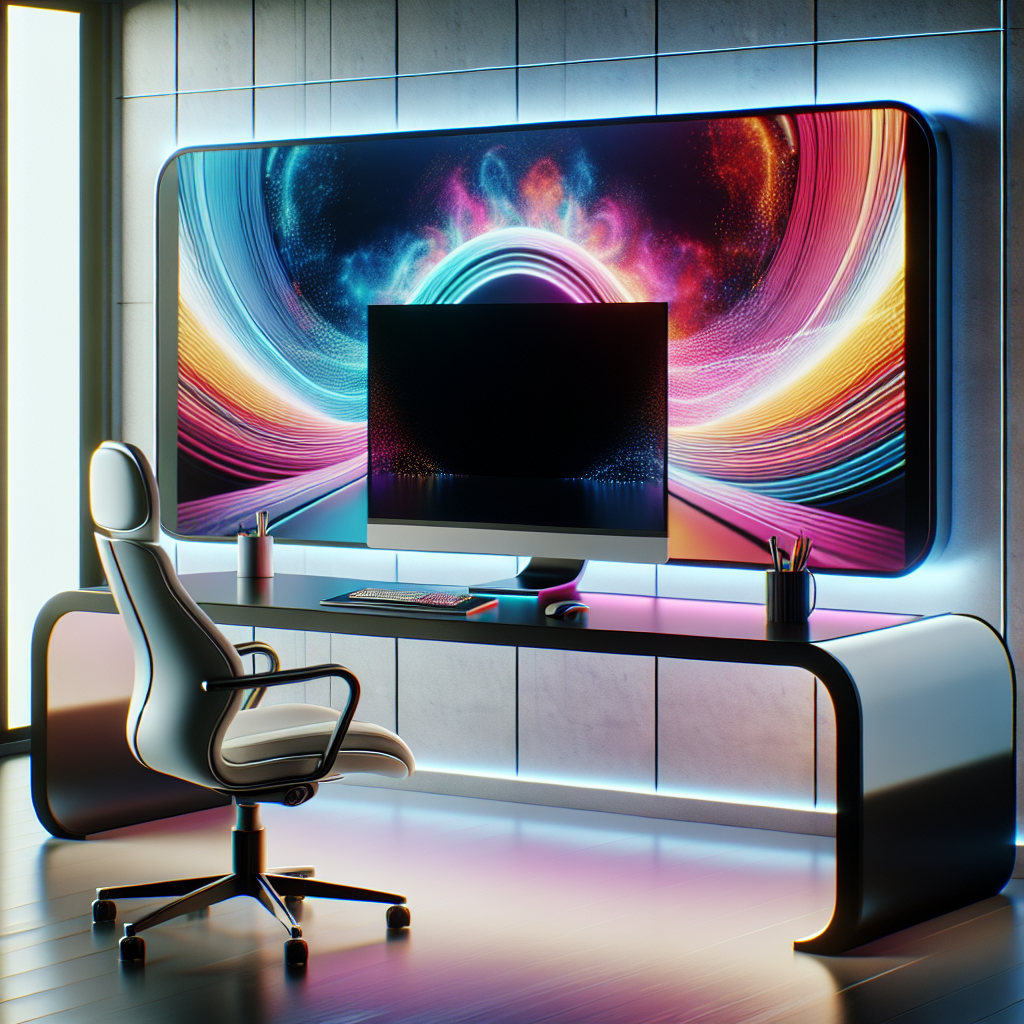As technology evolves, the demand for more immersive and realistic viewing experiences continues to grow. Monitors with curved displays are increasingly popular due to their enhanced field of view and ergonomic design. However, when it comes to choosing between different types of monitors, the question often arises: Are there curved plasma monitors available? This article delves into this inquiry, exploring the technical aspects, advantages, and availability of curved plasma monitors in the market.
Introduction to Monitor Types
Before diving into whether curved plasma monitors exist, it’s essential to understand the fundamental types of monitors available today. Primarily, monitors are categorized into the following types:
- LCD Monitors (Liquid Crystal Display)
- LED Monitors (Light Emitting Diode)
- OLED Monitors (Organic Light Emitting Diode)
- Plasma Monitors
- CRT Monitors (Cathode Ray Tube)
Types of Monitors and Their Characteristics
| Monitor Type | Technology | Main Use Case | Key Advantages |
|---|---|---|---|
| LCD | Liquid crystals used to display images | Everyday computing | Cost-effective, good for regular use |
| LED | Light-emitting diodes for backlighting | All round (Gaming, professional work) | Better energy efficiency, thin displays |
| OLED | Organic compounds light up individually | High-end gaming, professional media creation | Excellent color reproduction, flexible |
| Plasma | Gas cells emitting light when electrified | Home entertainment | High contrast ratio, deep blacks |
| CRT | Cathode ray tube technology | Older technology, rarely used | High refresh rates, robust build |
The Evolution of Plasma Technology
Plasma technology has been a stalwart in the realm of display technologies for years. Plasma monitors operate by illuminating tiny colored fluorescent lights to produce an image. Each pixel contains three fluorescent lights – a red, a green, and a blue light.
Plasma monitors were popular for their excellent color accuracy, wider viewing angles, and high contrast ratios. However, with the advent of newer, more energy-efficient technologies such as LCD and OLED, plasma screens have seen a decline in popularity and production. The manufacturing costs and power consumption of plasma displays are significant disadvantages compared to modern alternatives.
Curved Screen Technology
Curved screens are designed to provide a more immersive viewing experience. The curvature of the display is measured in radius (e.g., 1800R means a curvature with a radius of 1800mm). This curvature aims to fill a greater portion of the user’s field of view, making the viewing experience more engaging. Additionally, curved monitors reduce geometric distortions and visual fatigue, making them beneficial for long-term usage, particularly in gaming and professional environments.
Advantages of Curved Monitors
- Immersive Experience: The curved design wraps the display around the viewer, enhancing immersion.
- Reduced Glare: A curved screen can reduce reflections and glare from ambient light, making it easier on the eyes.
- Ergonomic Benefits: Curved monitors can reduce eye strain and discomfort associated with prolonged usage.
- Enhanced Field of View: These monitors provide a wider field of view and better peripheral vision efficacy.
Availability of Curved Plasma Monitors
Despite the advantages of curved screens, as of the current market scenario, curved plasma monitors do not exist. The reasons are multifaceted:
- Technical Challenges: Curving a plasma display involves significant technical hurdles that have yet to be surpassed. Plasma displays operate on the principle of gas discharge, and achieving the same performance levels while curving the display is a complex task.
- Market Realignment: With the shift towards more energy-efficient and advanced technologies like OLED, the demand for plasma screens has dwindled. Manufacturers have little incentive to invest in developing curved plasma monitors when other, more viable alternatives are available.
- Cost Concerns: Plasma displays are more expensive to produce than LCD or LED screens. Introducing a curved form factor would further inflate these costs, making the product less competitive in the market.
Alternative Curved Monitor Technologies
While curved plasma monitors are not available, consumers have several other options when it comes to curved displays. Here are the primary technologies that support curved form factors:
- Curved LED Monitors: These are the most common curved displays available today. They offer good performance, energy efficiency, and are relatively affordable. Popular options include monitors from brands like Samsung, LG, and Dell.
- Curved OLED Monitors: OLED technology allows for incredibly thin and flexible displays. Curved OLED monitors are known for their superior color accuracy and contrast ratios. While more expensive, they offer a top-tier viewing experience for high-end gaming and professional creative work.
- Curved LCD Monitors: Several manufacturers offer curved LCD monitors, providing a good balance of performance and price. These monitors are suitable for everyday use, gaming, and professional work.
Conclusion
In conclusion, while curved plasma monitors are not available in the market due to technical, market, and cost-related reasons, there are numerous alternatives that provide similar benefits. Curved LED and OLED monitors are widely accessible, offering immersive viewing experiences, reduced glare, and ergonomic benefits. As technology progresses, the focus remains on more efficient and advanced technologies rather than revisiting plasma displays. Consumers looking for curved monitors have viable options that meet modern requirements and offer excellent performance.




